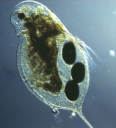Mars Surface Report #5
The following is last part of a series of five emails I sent to a local middle school during my visit to the Mars Desert Research Station as the crew geologist.
Hello,
Boy am I tired! Over the last few days I have done a lot of EVAs. Most of them are long too, usually more than three hours. With a spacesuit on it’s enough to tire anyone out. A lot of the crew has been tired from time to time, so we have to be careful to space out our EVAs, and to give people a rest when they want it. Otherwise people get grumpy or uncomfortable. We have six spacesuits and eight people, so we’ll rotate who goes out and who stays in. As the {en:geologist} I have to go out a lot, but today I get to stay in.
There’s a lot of science going on here at the {en:Mars Desert Research Station}. I do geology, but there is also a biologist and an engineer who each have their own experiments.
When Mars astronauts finally do visit the Red Planet, they’ll have to be prepared to live there for many months. If they had to bring all their water and fuel from Earth though, it gets to be very expensive, and it has to be carefully measured. If there was some way to look for water and fuel on Mars, then we wouldn’t have to bring so much with us. That means we could also get to Mars faster, since we don’t have so much weight.
My geology project is to look for places where both fuel and water can be extracted. You may have heard of {en:groundwater}, which is basically just water that is in the ground. It can be found anywhere on Earth if you dig deep enough, even the driest deserts. Mars astronauts might not be able to dig really deep though since they won’t have the big drills and special equipment they need. But, if there are places where water vapor or {en:methane} can seep up through the ground as gases, we could go to those places and extract those resources and bring them back to the Mars lander.
The best places for these gases to seep through are along faults, places where the rock has scraped past other rocks. It is a lot easier for gases to move along faults up to the surface than to simply seep through solid rock. In my project, I dig holes and measure the gases that come out. If I find a place where there are lots of gases, then that’s a good place to extract resources for Mars astronauts. I don’t know how to actually get the gases out though, I just try to find them. The next step is for a smart engineer to come up with an idea to extract the gas.
Our biologist, Cheryl Wartman, is testing our water to see if it’s toxic. She’s also testing our “grey water”, water that is put down the sinks and recycled, to see how toxic that is as well. Additionally, she’s testing what mixtures of grey water and normal water are toxic. She uses very very tiny organisms called “{en:daphnia},” which sort of look like extremely tiny shrimp. Once she puts them in the water mixtures, she checks up on them every 6, 12 and 24 hours to see how they’re doing. Once she finds the point that half of them aren’t able to make it, it’s considered toxic and definitely not safe.
We also have an open-ended researcher, Arthur Guest, on our trip and he’s testing a “smart” container that tracks what is put into it and what is taken out of it. This is useful because if an astronaut loses or misplaces something, it may be the only one on the trip! Every item that goes inside has a tiny computer chip attached, and the box reads the chip and updates a website that can be viewed from any computer with internet access.
His container is built as a hexagonal prism so that lots and lots of boxes can be stacked on top of each other. Also, the boxes will be smart enough one day to alert you if you put something in that box that’s not supposed to go there, like a food item inside the same box as a fuel can for example.
Here’s lots of pictures of our various experiments, and these are just the ones we do on our trip. There are lots of other experiments that could be done in order to prepare astronauts for such a big journey. Can you think of any?
From Mars,
Kerry, Crew Geologist
Mars Desert Research Station – Crew 66



